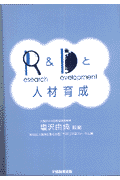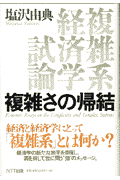塩沢由典『増補 複雑系経済学入門』
ちまく学芸文庫、2020年5月。 Amazon.co.jpの月間推定販売部数 2021年12月 11冊ノーベル物理学賞のお祝い相場(25冊)から半減以下へ。 書評・紹介
Amazon書評
- 塚本恭章さん「塩沢氏の「補章」長文解説がきわめて魅力的!」
- Bitter and Sweetさん「 経済学のあり方に疑問を持つ全ての人に」
- renqingさん「補章『複雑系経済学』以後の20年」を中心に」
- がっちゃんさん「一般のビジネスパースンこそ今読みたい本」
- 鷺宮次郎さん「経済学や社会学あるいは科学全般に興味のある方に」
- 末席研究員さん「経済学が必要としているもっとも重要な課題」
- エピキュリアン・タントリストさん「新しい科学が生まれる際には・・・立ち返る場所や時点があるべき」
- Surely you are doing thatさん「20年前に集中講義にいったさい聴講してくれてたという。」(Amzazonで買われなかったためか、ずいぶん下のほうに隠れています。)
- be3osakaさん「新古典派経済学を批判する書物のなかではもっとわかりやすい」
- 織田信長さん、ユキノリさん、みじかい書評、ありがとうございます。
- (2022年8月8日)青野洋三さん、「今後に期待と課題を感じさせる入門書」と評してくださいました。「期待と課題」といわれるなら、ぜひ増補の「その後の二十年」を読んでほしかった。「市場の失敗」について書かないと「市場原理主義の護教的研究に留まる」といわれるのは、残念ながら新古典派(主流派)経済学と新しい経済学の区別ができていないということ。わたしの筆力不足でしょうか。
Renqingさん書評
- (1)本書書誌・詳細目次
- (2)第1部「なぜ、複雑系経済学か」
- (3)第2部「科学知のパラダイム転換」」
- (4)第3部「合理性の限界とその帰結」(その1)
- (5)第3部「合理性の限界とその帰結」(その2)
- (6)第3部「合理性の限界とその帰結」(その3)
- (7)第3部「合理性の限界とその帰結」(その4)
- (8)第3部「合理性の限界とその帰結」(その5)
- (9)第4部「自己組織する複雑系」
- (10)補章「『複雑系経済学入門』以後の二〇年」(完結) 補章部分を中心にAmazonに包括書評が載っています。
- 社会情報学系院生
- 夏野剛さん(増補版に対するものではありませんが、最近のものです)
- 考える豚さん 表題とおり「読書ノート」なのかもしれません。正確に読んでいただいています。「補章」への感想がないのが残念です。
- 春の踊り子。さん 2020.8.31に「最高に面白い知のパラダイム!複雑系・カオス理論のおすすめ本6冊!」という特集をされています。
- 専大の人間Rさん 進化経済学との関連で考えてくれています。卒諭の参考としては、ぜひ補論を読んでください。
- 読書メーター・bonbonさん 著者としてレビューにコメントしました。
- こんな妄想をしている人もいるようです。こちらのスレッドもどうぞ。
- CharlieInTheFogさん 第9章「複雑系としての企業」に興味をもってくれたようだ。
- 糖質科学の専門家の野村一也さんが『増補 複雑系経済学入門』を紹介してくれている。わたしが野村さんに数学を教えたことがあるというのだが、同志社中学でのことだろうか。もう60年以上もまえのことで、回りまわって新しい因縁がうまれたようです。
- 石和田雄二さま(アイヴィス代表取締役) 社員に読んでいただきたい図書200選(2020.9.25)
- 村本道夫さま(弁護士) 資本主義と企業の行方・参考図書(2020.10.)
- 青山在住のトレーダーさま 複雑系シリーズ7冊の1に挙げていただきました。11月7日現在で、なんとこの記事が「このブログの人気記事」第2位に入っていました。
黒鳥社のblkswn radioで本書のいちぶが朗読・放送されています。2021.7.19日。
音読ブラックスワン#55
Microfoundations of Evolutionary Economics
Y. Shiozawa, M. Morioka, and K. Taniguchi 2019 Microfoundations of Evolutionary Economics. Sprigner Japan, Tokyo. 森岡真史さん・谷口和久さんとの共著です。『増補 複雑系経済学入門』「補章」に書いたように、わたしにとっては複雑系経済学・進化経済学の集大成にあたるものです。各章は3人それぞれ別別に書いたのですが、「共著」扱いになっていて、各章に著者名がありません。序文にのみ記述があります。☆☆共著者のひとり、森岡真史さんがこの本の第3章・第4章・第5章に対し、2020年度の進化経済学賞を授与されることになりました。お祝いもうしあげます。
- Chapter 1. Microdoundations of Evolutionary Economics.
Draft 完成稿ではありません。引用は刊行版より御願いします。
3つの能力限界のもとにある人間行動をどう定式化するか、それが有効であるためには環境はいかなる特性をもたなければならないか。複雑系経済学の中核部分です。 - Chapter 2. A Large Economic System with Minimally Rational Agents.
3つの能力限界のもとにある人間が地球大の巨大システムを動かせているのはなぜか。この章は価格理論中心。数量体系は、第3章から第6章で展開されています。この本の全体像を掴むにはさいていげん第2章と第4章をおよみください。
Book reviews
- Marc Lavoie's book Review Review of Evolutionary Political Economy(2020).
閲覧数1600を超えました。(2021.7.21) 閲覧数が1800を超えました。(2021.11.29)
- Yoshiro Inoue's book Review. Evolutionary and Institutional Economics Review (2020). PDF
- Michael Brady's book review: "Can Shiozawa’s, Morioka’s and Taniuchi’s Microfoundations for Evolutionary Economics (2019) Serve As the Microfoundations for “… Post-Keynesian Economics “ (2019, p.vii)? The Answer Is Definitely Yes if Post-Keynesians Can Break Away From Joan Robinson’s Anti-Mathematical, Anti-Formalist Views" SSRN, 2020.
Michael Brady氏の一風変った書評(?)。本の内容に関する紹介はほとんどありません。
- Barkley Rosser's book review, 2020. これは下記のSymposiumへの投稿です。
Metroeconomicaでのminisymposium用書評 - 西 洋(にし・ひろし)氏による書評 『季刊経済理論』第57巻第4号、98-101ページ.
- 塩沢由典・森岡真史・谷口和久「西洋氏の書評にたいするリプライ」『季刊経済理論』第58巻第3号、104-107ページ.
Symposium on Yoshinori Shiozawa, Masashi Morioka and Kazuhisa Taniguchi (2019), Microfoundations of evolutionary economics, Tokyo: Springer Japan
Tony Aspromourgos, Kenji Mori, Masashi Morioka, Arrigo Opocher, J. Barkley Rosser Jr., Yoshinori Shiozawa, Kazuhisa Taniguchi, Heinz D. Kurz, Neri Salvadori4人の論者による討論、塩沢・森岡・谷口のリプライ、Metroeconomica共同編集長二人の編集序言から構成されています。
Early viewですので、まだ巻・号とページはありません。
PDFが手に入らない方は、塩沢のe-mailまでご連絡ください。お送りします。 Marc Lavoieの新論文での紹介
Lavoie, M. 2022 The Godley-Tobin memorial lecture / Godley versus Tobin on monetary matters. Review of Keynesian Economics 10(1): 1-24. 2021年度Eatern Economic Association年次大会でのGodley-Tobinレクチャーの記録。GodleyもTobinもSFCつまりstock-flow consistentな体系をめざしたことが知られているが、両者の異同(どこが共通で、どこが違うか)を、個人的エピソードをも含めて紹介。こうしたスタイルをa bit like Geoffrey Harcourtと名づけいた。Shiozawa, Morioka and Taniguchi (2019)は、‘Decisions by households, firms and banks are mainly based not on price but on quantity signals which often take the form of realised stocks of wealth or inventories’ (Godley 1997, p. 4).というGodleyのビジョンを裏付けるものとして参照されている。その点を指摘した注を引用しておく。
14. Shiozawa et al. (2019) demonstrate that a fully decentralized input-output production economy, where prices only depend on normal unit costs, will converge to a stable quantity structure, despite firms reacting only to quantity signals, provided there are sufficient inventories and excess capacity. Their work thus provides justification for Godley’s approach, as I explain briefly in a book review (Lavoie 2020).Lavoie (2020)は、上記Book Reviewsのトップに紹介したもの。 Marc Lavoie Post Keyensian Economics 2nd Edition (2022)での紹介 (2022.7.10)
3.7.4 Quantity Adjustments versus Price Adjustments
Neoclassical economics assumes that price flexibility is at the core of a market economy and that, without it, adjustments to demand changes would be next to impossible. It is often argued that a complex market economy only avoids chaos thanks to these flexible price adjustments, and this would justify the use of the neo-Walrasian model as a rigorous benchmark model. By contrast, the whole chapter has suggested that firms generally wish to avoid price competition, so as to avoid destructive price wars. Leading firms try to stick to their costing margins while peripheral firms match the prices of the price leader, so that competition occurs through lower unit costs, investment and innovation. With the exception of raw materials, prices hardly react to demand changes and only react to changes in their unit costs. One may thus wonder whether a world which consists of such firms relying on cost-plus pricing, and with limited information as argued in Chapter 2, can truly constitute an adequate representation of a reality made of a highly complex and diversified set of interdependent firms and sectors where chaos is avoided. Herbert Simon certainly thought so.
Price provides only one of the mechanisms for coordination of behavior, either between oranizations and within them. Coordination by adjustment of quantities is probably a far more important mechanism from day-to-day standpoint, and in many circumstances will do a better job of allocation than coordination by prices. ... Quantities of goods sold and inventories, not prices, provide the information for coordinatin these systems ... Many observers of business scheduling and pricing practices have claimed that (with possible exeption of agricultural and mining sectors) models that use quaitities as signals approximate first-world national economies more closely than do models in which prices are the principal mchanism for coordination. (Simon, 1991, p.40)The question has recently been tackled in a book by Shiozawa , Morioka, and Taniguchi (2019). They contend that capitalism is by nature a 'sellers' market--a demand constrained economy--as opposed to the supply-constrained socialist economy described by Janos Kornai (1980). They link this claim to Sraffa's 1926 statement that the expansion of firms is not limited by rising unit costs but rather by the dificulty of attracting more customers. The separation of price and quantity adjustment is a fundamental principle. Quantities reflect changes in demand. Prices provide the critetion to judge if a new production technique is better than previously existing ones. Prices are regulated by production costs, that is, the minimum cost for a given markup structure. What we have here is a Sraffian theory of prices, slightly reinterpreted. The reinterpretation is based on three features: there is no uniform profit rate; the normal price, based on the normal unit cost, is the actual price, that is, cost-of-production prices are not prices achieved only in the long run; fixed capital is not associated with joint production, on the grounds that such joint production accounting is not practised in actual accounting, thus setting the unit depreciation cost on the basis of the normal volume. Shiozawa et al. (2019) construct multi-sectoral models, each sector with several different firms, each firm of a sector disposing of a finite set of fixed-coefficient production techniques. Prices are set by firms on the basis of normal-cost pricing, where prices only change when unit costs change and not when demand or the proportion of demand attributed to each product changes. Production takes time--there is a time sequence, forecast and orders, then production, and finally delivery and sales--so production cannot immediately respond to changes in demand, and hence there must be a buffer, which are the stocks of inventories, for both intermediate inputs and produced outputs. Finally, as argued in section 3.5.3, firms have excess capacity. Shiozawa et al. (2019) show that supply adjusts to demand in a converging process, despite the complete lack of reaction of prices to the evolution of sales and inventories, under minimal conditions: production must be equal or higher than the break-even point given by the markup, so that firms do not go bankrupt; banks provide credit on demand; inventory buffers must be large enough, and there must be sufficient smoothing in forecasting demand. These forecasts are based on data that are easily obtainable, and the computations that are assumed to be made by firms require little capability. The message being conveyed by their book should by now be clear: the results achieved by Shiozawa et al. (2019) constitute a great breakthrough--an achievement of paramount importance as the authors say--for the analysis of the modern industrial economy (the financial sector requires a completely different story). The authors claim that their results are comparable to those of Arrow-Debreu, but obtained within the completely realistic framework of a production economy where agents dispose only of local information and frugal capabilities. Prices are not scarcity indices: changes in prices are not signalling changes in demand relative to supply. They are a tool to assess the best production method, as improvements or new combinations will be reflected by a decrease in unit costs. The information conveying changes in demand is transmitted and assessed through quantity signals--sales and changes in inventories--but not through prices. A key achievement of the authors is the demonstration that a multi-sectoral economy, where production takes time and with produced inputs, can adjust to changes in demand through the realistic decisions of managers to change quantities without any change in prices--something that previously was not thought to be possible. The only drawback of Shiozawa et al.'s book is the lack of aggregate demand feedback, which will be the main subject of the remaining chapters. From pp.190-191 Shiozawa, Morioka and Taniguchi (2019)の意義をひじょうに簡潔にかつ正確に解説してくれています。
塩沢由典『経済に「国」はいらない/ジェイン・ジェイコブズを読む』
SURE、2018年12月20日. *この本は一般の書店あるいはネットショップでは購入できません。ちょくせつ編集グループSUREまで注文してください。
書評
服部茂幸『エコノミスト』2019年3月8日
A New Construction of Ricardian Ttheory of International Values
Y. Shiozawa, T. Oka, and T. Tabuchi (eds.) (2017) A New Construction of Ricardian theory of International Values / Analytical and Historical Approach.Springer, Singapore.
Chapter 1 The new theory of international values: An overview. By Y. Shiozawa, pp.3-73.
Chapter 7 An origin of the neoclassical revolution: Mill's "reversion" and its consequences. By Y. Shiozawa, pp.191-243.
自著解説
- 日本経済学会・共通論題・講演
- 『経済学のパラレル・ワールド』第6章「異端派貿易論の最前線」(学生向けの紹介/しかし手抜きではありません。)
田淵太一氏諭文「国際価値をめぐるシーニア・トレンズ論争の意義 : Catallacticsへの転換」『同志社商学』71(5): 1027-1042, 2020年3月。
塩沢由典『リカード貿易問題の最終解決』
 岩波書店、2014年3月27日、xix+426頁。
岩波書店、2014年3月27日、xix+426頁。ブック・サーチャー
立ち読み
(はじめに、目次、第1章p.10まで)
受賞
JAFEE Prize 2016 『リカード貿易問題の最終解決』(岩波書店、2014)における顕著な貢献にたいし 進化経済学会 2017年3月25日 しばらく絶版となっていましたが、岩波オンデマンドブックスで購入可能となりました。
書評・紹介
- 関良基氏書評 代替案のための弁証法的空間 2014.8.6
- 岩田征昌氏書評 ちきゅう座 2014.8.10
- 秋山氏書評 秋山のブログ 2014.6.9~8.27
- ある「地方公立病院副院長」さんが8回にわたり紹介・批評してくれています。上は最新記事。本の批評は、以下の各記事をごらんください。[戻る]で当ページに戻ってもらえますと、次々と読めます。
- 6月9日 更新できなかった理由
- 6月16日 TPPに関する考察
- 6月23日 価格はどうやって決まるか?
- 6月26日 不況を解消するには
- 7月22日 HOS理論と経済学の問題
- 8月8日 日本銀行と物価と利子
- 8月22日 マルクスの誤り、ケインズの誤り
- 8月27日 経済学と数学
- 経済学の専門誌に載ったものですが、専門家でない人にもじゅうぶんわかってもらえるよう書かれているすばらしい書評です。ぜひご一読ください。
佐藤秀夫氏書評(2015年7月)『季刊経済理論』52(2):107-169.
- 「本書の国際価値論が先に挙げた5つの定型化された事実と3の疑問すべてに関与していること、貿易理論史という観点からみて画期的なものであることが了解されよう」と高い評価をいただきました。
- 田淵太一氏諭文「国際価値をめぐるシーニア・トレンズ論争の意義 : Catallacticsへの転換」『同志社商学』71(5): 1027-1042, 2020年3月。
- 経済学史に占める本書の意義がよく分かります。
塩沢由典・有賀裕二編『経済学を再建する』
中央大学出版部、2014年3月10日、xix+545頁。書評・紹介
Amazon書評
- がっちゃん「不平等の拡大より経済学を再建するための条件を明確化することだ」2014年12月25日
- 鷺宮次郎「社会科学および経済学に興味を持つ人は一読の価値あり」2015年1月5日
- Renqing「劫初より作りいとなむ殿堂にわれも黄金の釘一つ打つ」2015年9月8日
Renqing氏書評
提案編の全5章のそれぞれについての詳しい書評と結論的総評とからなる力作です。
- 第1章「なにが必要か―経済学再建のために―」2015年8月13日
- 第2章「進化経済学の可能性」2015年8月14日
- 第3章「価値と数量の二重調整過程」2015年8月15日
- 第4章「古典派価値論のリドメイニング」2015年8月17日
- 第5章「新しい国際価値論とその応用」2015年9月6日
- 結論2015年9月6日 付録にAmazonへの書評(上に掲載)が載っています。
『今よりマシな日本社会をどう作れるか』
塩沢由典『今よりマシな日本社会をどう作れるか/経済学者の視野から』SURE*この本は一般の書店あるいはネットショップでは購入できません。
ちょくせつ編集グループSUREまで注文してください。
塩沢由典『関西経済論 原理と議題』

晃洋書房、2010年3月30日、xvii+583頁。
目次 まえがき 内編解説
ちかく正誤表を載せます。(果たせていません。2020.7.13)
書評・紹介
『イクザミナ』2010年6月号
『毎日新聞』2010年6月13日
自著自賛
進化経済学会ML 2010年4月11日
『関西スクウェア』No.214(2010年5月)
研究会での報告 関西州ネットワークの会2010年5月29日
塩沢由典監修・関西活性化研究会編著『自立する関西へ/発想の転換と未来戦略』
 「シリーズ関西の創造」第2巻。
「シリーズ関西の創造」第2巻。晃洋書房、2009年12月10日、vii+251。
監修のみ。
塩沢由典監修・関西活性化研究会編著『関西のポテンシャル/伝統文化と成長エンジン』
 「シリーズ関西の創造」第1巻。
「シリーズ関西の創造」第1巻。晃洋書房、2009年12月10日、ix+257。
監修のみ。
塩沢由典・小長谷長之編『まちづくりと創造都市2/地域再生編』
晃洋書房、2009年3月30日、xvii+275。塩沢分担分:第1章「まちづくりの課題としての商店街」pp.3-13.
Artifical Market Experiments with the U-Mart
Y. Shiozawa, Y. Nakajima, H, Matsui, Y. Koyama, K. Taniguichi and F. Hashimoto (2008) Artificial Market Expeiments with the U-Mart. CD-Rom included. Springer, Tokyo.塩沢由典・小長谷長之編『まちづくりと創造都市/基礎と応用』
晃洋書房、2008年5月10日、viv+218。塩沢分担分:第1章「都市政策の創造」pp.3-20.
塩沢由典・小長谷長之編『創造都市への戦略』
 晃洋書房、2007年4月30日、vii+394。
晃洋書房、2007年4月30日、vii+394。塩沢分担分:
第1章「創造都市のために」pp.2-16.
第24章「いかに考えるか」pp.374-394.
進化経済学会編『進化経済学ハンドブック』
 共立出版、2006年9月、x+581。 編集者序文
共立出版、2006年9月、x+581。 編集者序文3年がかりで、なんとか出版までこぎつけました。
おもな執筆項目:
概説 pp.3-134 複雑系経済学 pp.221-226 普及学 pp.286-289 ヨーロッパの農法 pp.354-355
概説・目次 これは『ハンドブック』目次には載っていない部分です。
編集者自身による書評(投稿中)
「進化する○○」表現集 「進化」は、いまこんなに流行語です。
塩沢由典・間藤芳樹編『創造村をつくろう!』
 副題:大阪・キタからの挑戦
副題:大阪・キタからの挑戦晃洋書房、2006年6月、125頁。 編集者まえがき
塩沢由典責任編集『経済思想1』
 副題:経済学の現在1 『経済思想』全11巻の第1巻
副題:経済学の現在1 『経済思想』全11巻の第1巻日本経済評論社、2004年12月、342頁。 編集者序文
書評
森岡真史 週刊読書人2005.4.22
若森章孝 週刊図書新聞2005.4.30
塩沢由典編『挑戦 起業家育成への道』
 日刊工業新聞社、2004年7月、294頁。
日刊工業新聞社、2004年7月、294頁。塩沢由典『マルクスの遺産』
 副題:アルチセールから複雑系まで
副題:アルチセールから複雑系まで藤原書店、2002年3月30日、446頁。
目次
自著紹介 諸氏の感想
各紙での書評:
読売新聞・竹内佐和子
京都新聞・八木紀一郎
毎日新聞・中村達也
週刊読書人・西部忠
bk1書評・佐々木力
hidaka_hisaoさん「マルクス主義のバランス・シート」と「経済学の方法」
ポール・オームロッド著、塩沢由典監修、北沢格訳『バタフライ・エコノミクス』
 副題:複雑系で読み解く社会と経済の動き
副題:複雑系で読み解く社会と経済の動き早川書房、2001年9月1日、311頁。
ISBN: 4152083697
自著紹介
書評
SFオンライン56号書籍レビュー 菊池誠
進化経済学会・塩沢由典(編)『方法としての進化』
 (ゲネシス進化経済学1) ISBN 4-431-70860-X
(ゲネシス進化経済学1) ISBN 4-431-70860-Xシュプリンガー・フェアラーク東京、2000年6月、vii+279頁。
出版案内
序章:解説
書評:西部忠
塩沢由典監修・関西生産性本部「R&D」交流フォーラム編『R&Dと人材育成』
 学際図書出版、1999年12月15日、vii+340頁。
学際図書出版、1999年12月15日、vii+340頁。
塩沢由典『市場の秩序学』
塩沢由典 1998『市場の秩序学/反均衡から複雑系へ』ちくま学芸文庫、1998年4月1日 引用 恵比寿ガーデン法律事務所 「個人と組織・法人(42)」(2020.3.4)の中で、『市場の秩序学』の中の「在庫・貨幣・信用」を引用して考察されています。
塩沢由典『複雑系経済学入門』
 生産性出版、97年9月1日、442頁。
生産性出版、97年9月1日、442頁。ISBN: 482011610X
- 松原隆一郎による書評
-
天野哲彦による書評
- 高見芳彦による書評
- 塚本恭章による書評
- hidaka_hisaoによる書評
- 西原隆による書評
- 「シンプルアマゾン:本」の紹介
- Hi-Hoさん「はやり言葉に込められたウソとマコト」
諸氏の紹介・コメント
塩沢由典『複雑さの帰結』
 副題:複雑系経済学試論
副題:複雑系経済学試論NTT出版、1997年6月11日、iii+314頁。
- 書評 blog:人生という森の探索(出逢いと発見)
- 2003年度大学入試センター試験 国語Ⅰの第1問として、本書所収の「人はなぜ習慣的に行動するのか」が取り上げられた。
- 問題については、河合塾速報[国語Ⅰ] [問題]をクリックてください。
- 大学入試センター問題作成部会が出題意図を公表しています。関係箇所を抜粋しておきます。
- 大学入試センター問題作成部会が出題意図を公表しています。関係箇所を抜粋しておきます。
塩沢由典編『大学講義ベンチャー・ビジネス論』
阿吽社、1991年3月、
塩沢由典『市場の秩序学』
 副題:反均衡から複雑系へ
副題:反均衡から複雑系へ筑摩書房、1990年9月1日、iii+396+vii頁。
1991年サントリー学芸賞(政治経済部門)受賞。
1998年「ちくま学芸文庫」
- 村上泰亮による書評(サントリー学芸賞・授賞に当たっての講評)
- 匿名読書家による書評 書評 blog:歩く
塩沢由典『近代経済学の反省』

経済学研究双書の一.
日本経済新聞社, 1983.
塩沢由典『数理経済学の基礎』
1981年、朝倉書店.伊藤清・広中平祐・松浦重武編集「数理科学ライブラリー」の2. 中国語訳:張強等訳『数理経済学基礎』浙江人民出版社、1984.